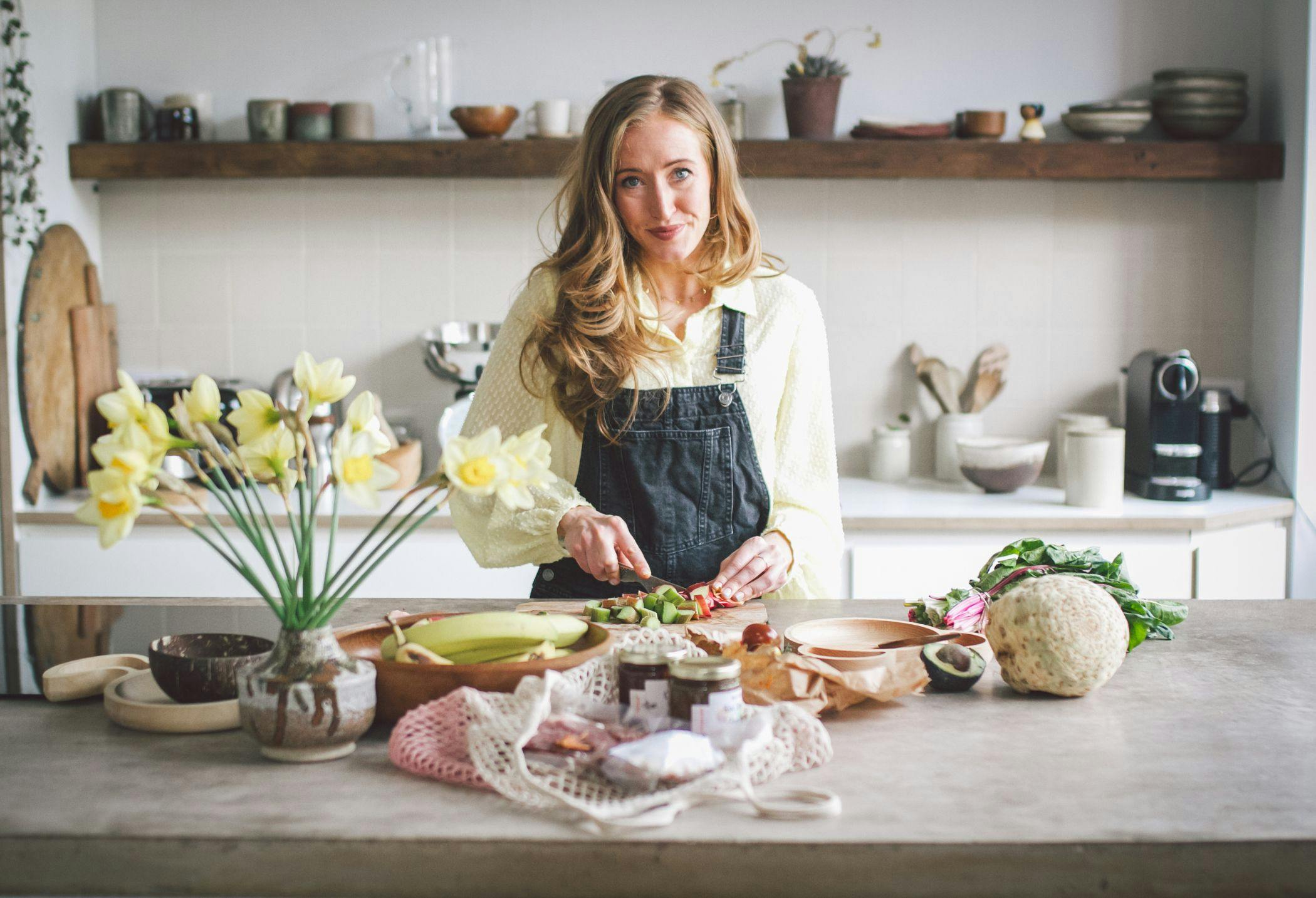
Medically Reviewed by: Lucy Upton
If you’ve ever found yourself frantically searching “how to make up a baby bottle” at 2 AM while rocking a crying baby in one arm and fumbling with a formula tin in the other—trust me, you’re not alone. I’ve been there, sleep-deprived and wondering why something so simple suddenly feels like a science experiment.
Whether you’re bottle feeding, breastfeeding, or navigating the world of mix feeding, making sure your baby’s milk is prepared safely is one of those things you just want to get right. But don’t stress—I’ve got you! Once you’ve mastered it, it becomes second nature.
To make things easier, we spoke with Lucy Upton, a qualified paediatric dietitian and feeding therapist, to break it all down. From prepping bottles for night feeds to making formula safely while out and about, here’s everything you need to know.
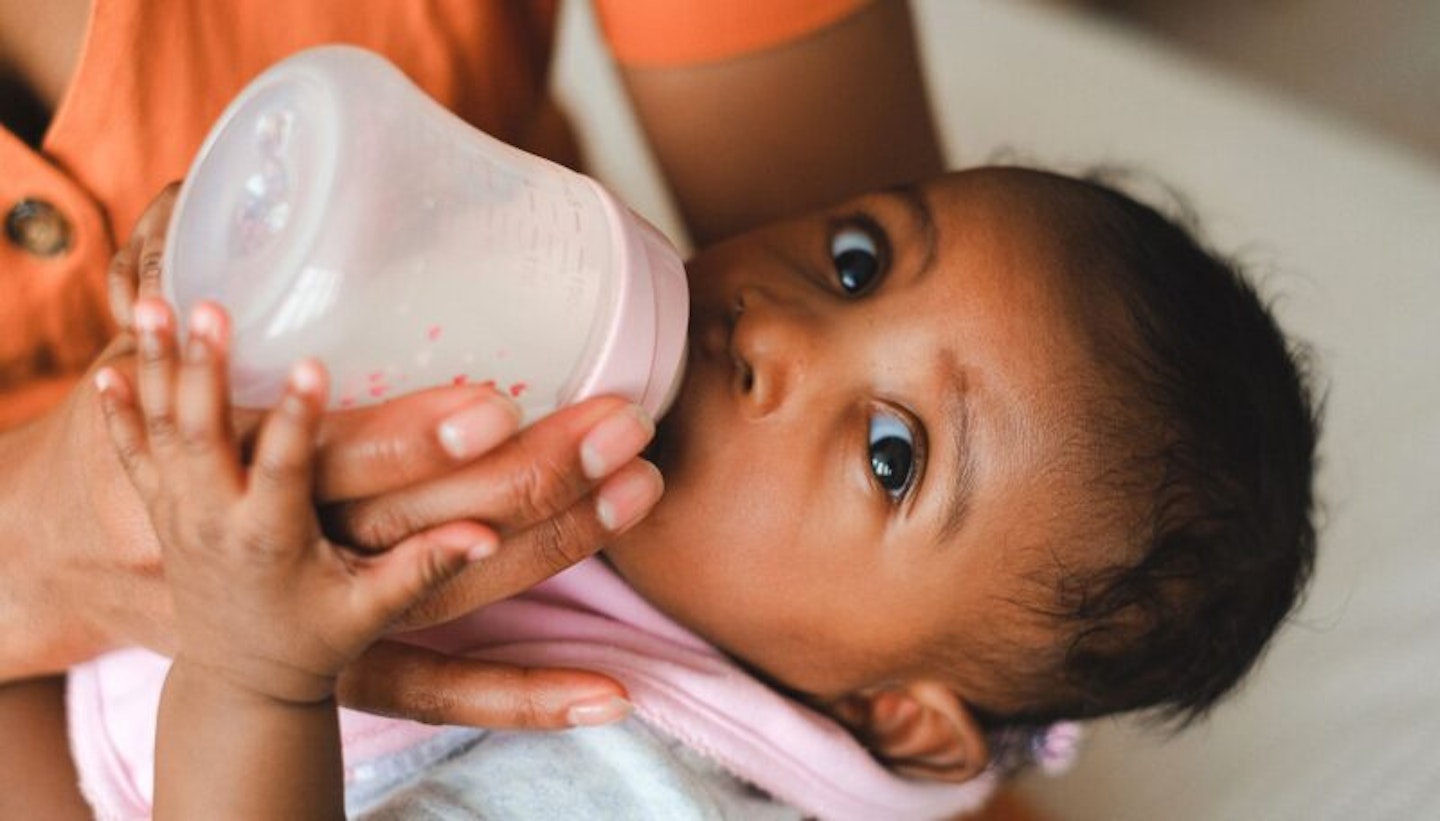
What you need and how to prepare a formula feed
Before preparing your baby’s bottle, it’s crucial to clean and sterilise all feeding equipment to reduce the risk of infections like vomiting and diarrhoea. This includes:
-
Teats
-
Lids
-
Retaining rings
-
Caps
-
The manufacturer’s scoop that comes with the formula
The NHS recommends sterilising baby bottles and teats until your baby is at least 12 months old to protect your baby’s developing immune system.
Essential items for preparing a bottle
A kettle – Always use fresh tap water and boil it to ensure it’s safe for your baby.
Formula milk – Choose an age-appropriate formula and follow the manufacturer’s instructions precisely.
Sterilised bottles and teats – Ensure all feeding equipment is thoroughly sterilised before use.
Vacuum flask and formula milk portable container – Ideal for preparing formula on the go, keeping boiled water at the right temperature for safe mixing.
Once everything is clean and ready, you’re all set to prepare your baby’s feed safely!
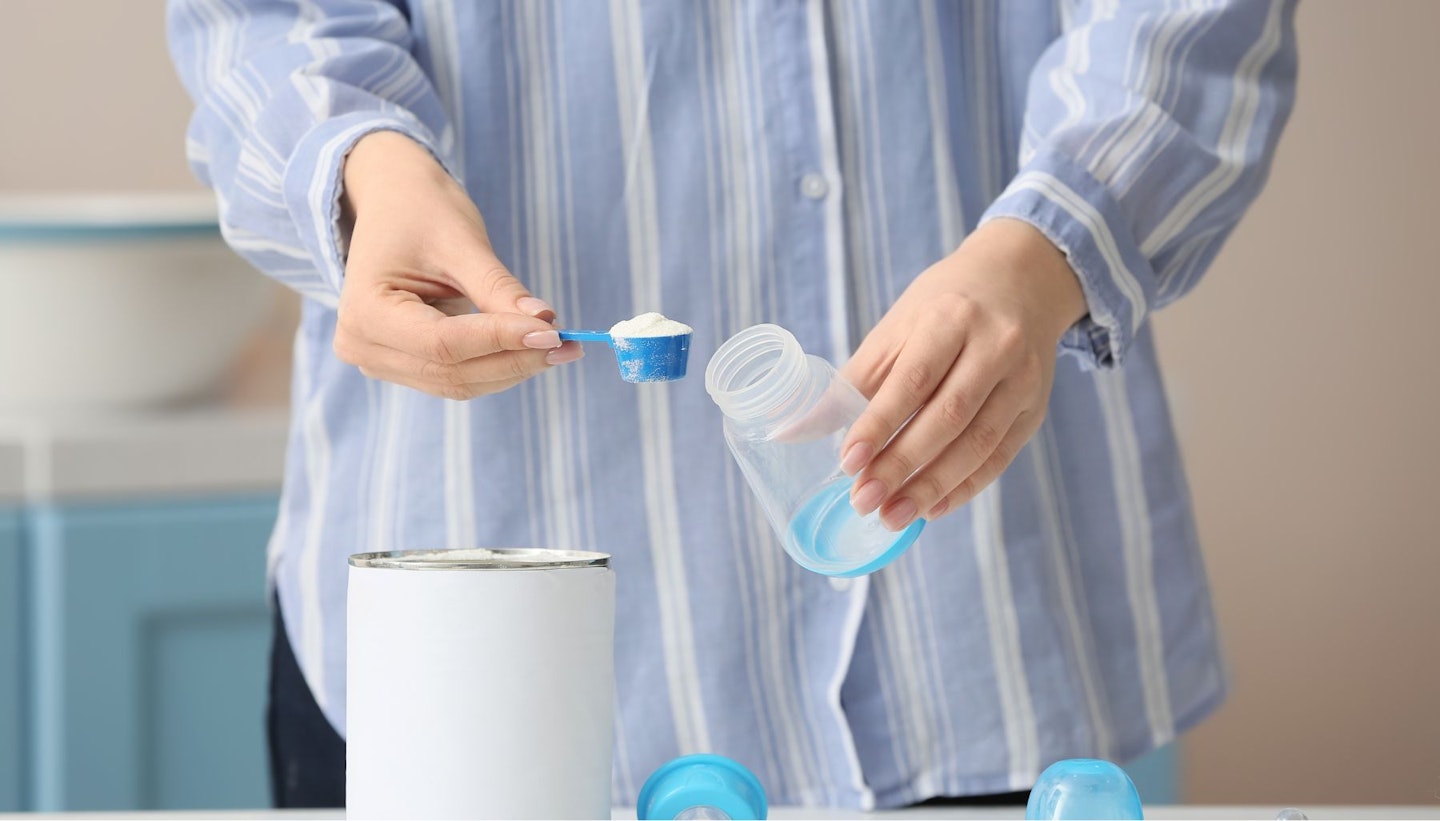
Step-by-step guide to preparing a formula feed
-
Fill the kettle with fresh tap water – Use at least 1 litre of fresh water. “Never use water that has already been boiled, as it may concentrate certain minerals, which isn't ideal for your baby’s developing kidneys,” says Lucy.
-
Boil the water and let it cool – Allow the water to cool for no more than 30 minutes so it remains at 70°C or above. “Boiling the water helps kill any harmful bacteria that could be present in the powdered formula,” Lucy explains.
-
Clean and disinfect your preparation area – Wipe down the surface you’ll be using to ensure it's hygienic.
-
Wash your hands thoroughly – Always wash with soap and water before handling bottles or formula.
-
Prepare sterilised bottles – If using a cold-water steriliser, shake off any excess solution or rinse bottles and teats with cooled, boiled water.
-
Place the bottle on the cleaned surface – Keep everything ready and within reach.
-
Add the hot water first – “It’s essential to pour the correct amount of hot water into the bottle before adding the powdered formula. This ensures the formula dissolves properly and any bacteria are killed,” Lucy advises.
-
Measure the formula accurately – Loosely fill the scoop with formula powder and level it off using the flat edge of a clean knife or the scoop’s leveller. “Always use the scoop provided with your formula brand and never alter the recommended powder-to-water ratio, as this could affect your baby’s nutrition and hydration,” says Lucy.
-
Attach the teat and lid securely – Double-check that everything is in place to avoid leaks.
-
Shake well – Mix until the formula is fully dissolved.
-
Cool the bottle – Hold the bottle under cold running water (with the lid on) until it reaches body temperature.
-
Test before feeding – Drip a little milk onto the inside of your wrist—it should feel warm or cool, but never hot.
-
Discard any leftovers – “Once a feed is finished, any leftover formula should be thrown away within two hours to prevent bacterial growth,” warns Lucy.
How to make up a bottle of formula when out and about
Making up a bottle on the go can be tricky, but Lucy advises, “If you're out and about, the safest option is to take a vacuum flask filled with freshly boiled water and a sterilised container with the correct amount of formula powder. Mix the formula as needed, ensuring the water is at least 70°C when combined with the powder.”
Alternatively, pre-made liquid formula can be a lifesaver when you're on the go!
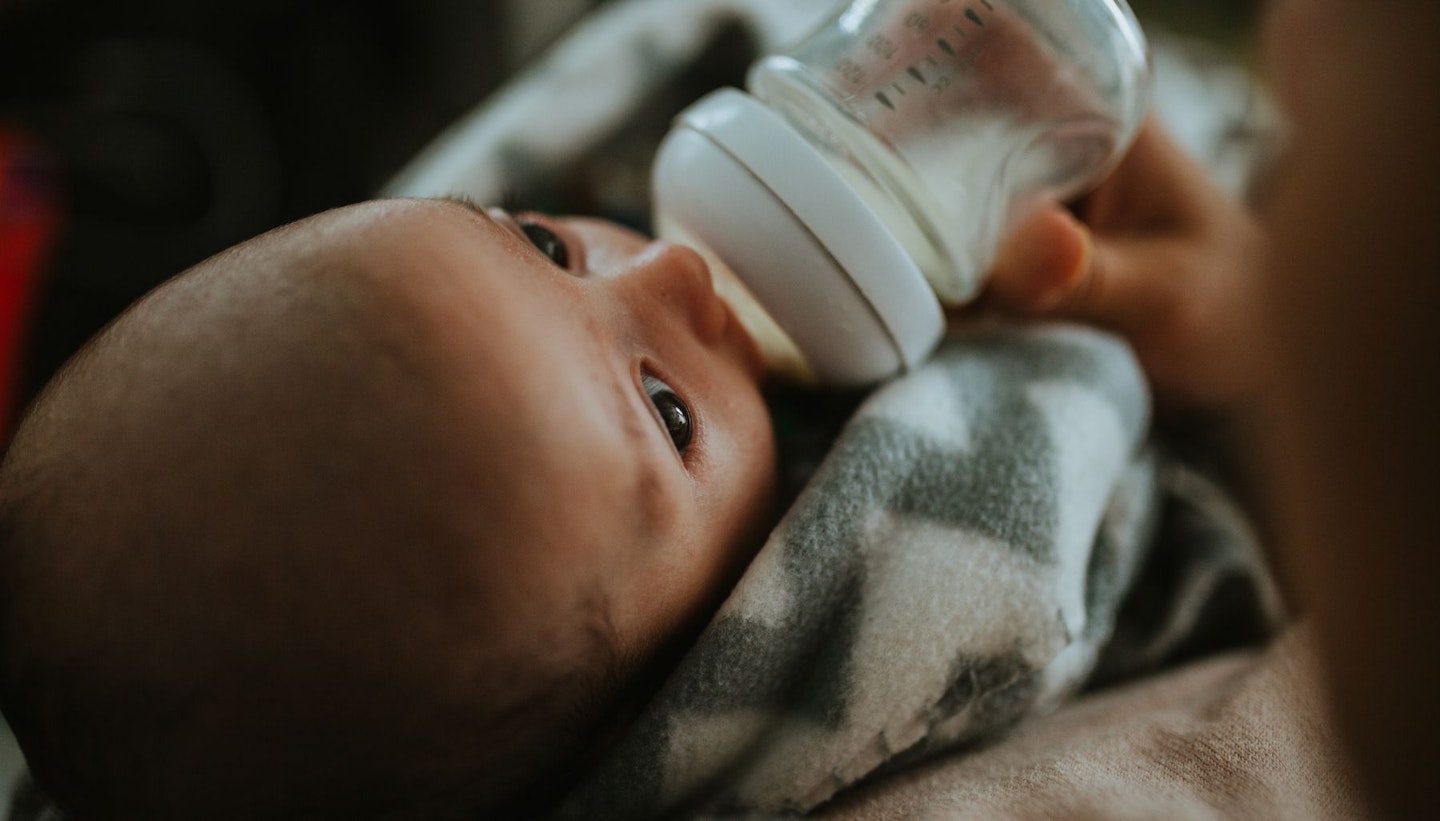
How to make up bottles for night feeds
Making up a fresh bottle in the middle of the night isn’t fun. Lucy suggests prepping in advance, “You can prepare a bottle ahead of time and store it in the fridge at 5°C or lower for up to 24 hours. When needed, warm it up by placing it in a jug of warm water or using a bottle warmer.”
Remember, never heat formula in a microwave—it can cause dangerous hot spots!
Can I make up baby bottles in advance?
Yes! But with a few rules:
-
Freshly made bottles should be cooled quickly (within an hour) and stored in the fridge.
-
Use within 24 hours if refrigerated.
-
Once warmed, use within two hours and never reheat more than once.
Dos and don’ts on how to make up a baby bottle
DO
Follow the manufacturer's instructions carefully—never add extra powder or water.
Always use freshly boiled water cooled to 70°C.
DON’T
Use bottled water, as it may contain too much sodium or sulphate.
Leave made-up bottles sitting at room temperature for long periods.
Breastfeeding? Here’s how to store and reheat breast milk
For breastfeeding mums who are pumping and storing milk, Lucy shares these tips:
Storage guidelines:
-
Fridge (4°C or lower): Up to 8 days (3 days if temp is higher).
-
Freezer (-18°C or lower): Up to 6 months.
-
Always label your milk with the date to ensure you use older milk first!
Reheating breast milk safely:
-
Warm milk by placing the bottle in a jug of warm water or under a warm running tap.
-
Never use a microwave—it can cause hot spots and burn your baby’s mouth.
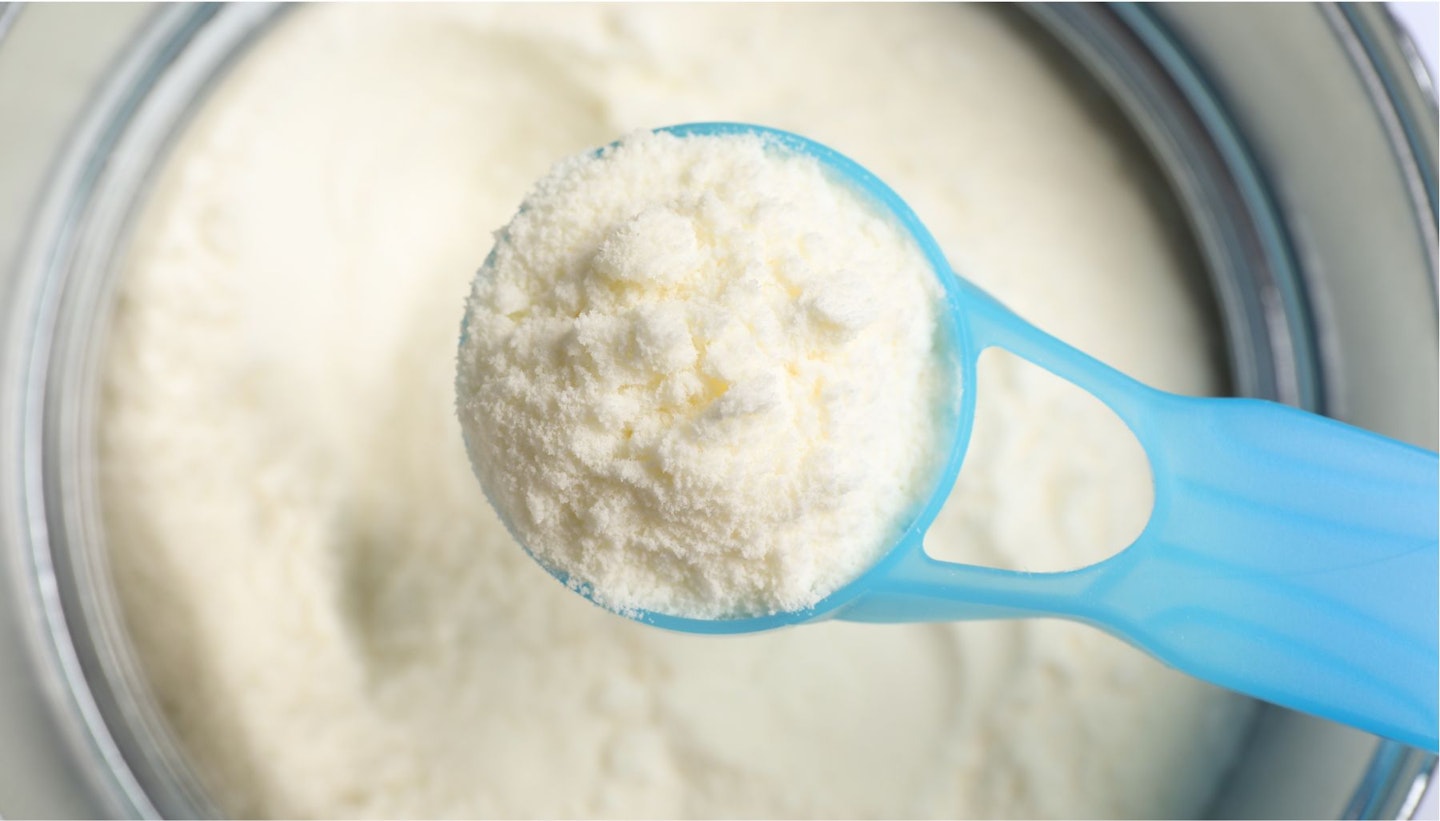
How to make up a baby bottle FAQs
What water should I use for formula?
According to Lucy,“It’s recommended that formula milk is made up with boiled tap water that has cooled to around 70°C. This temperature kills harmful bacteria while ensuring the formula retains its nutrients. Once mixed, allow the milk to cool further to body temperature (around 37°C) before feeding.”
How long can prepared formula be stored?
Room temperature: Use within two hours.
Fridge (5°C or lower): Use within 24 hours.
Once warmed: Use within two hours and never reheat again.
About the expert
Lucy Upton has also provided her expert advice and medically reviewed this article. Lucy is a UK Paediatric Dietitian and Nutritionist with over 15 years of experience across the NHS, private sector, public health, and industry. As director of The Children’s Dietitian Ltd, Lucy offers clinics, courses, and resources to empower families.
About the author
Anne Lora Scagliusi is a Senior Digital Writer at Mother & Baby. She is a Scotland-based journalist with over a decade of international writing experience, specialising in women’s health, maternal mental health, and wellness. Her work has been featured in Vanity Fair, Marie Claire, and Glamour and has appeared on several Vogue global editions. She is mum to a one-year-old bambino and lives between Italy and the UK.
